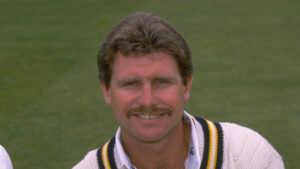
It may seem deceptively simple: athletes gliding effortlessly on bicycles, runners maintaining a pace slower than most people’s warm-up, or individuals strolling so gently it barely qualifies as exercise. Yet, this form of movement lies at the heart of what is increasingly known as zone zero exercise.
Challenging the “push yourself” ethos of gyms and fitness apps, zone zero exercise focuses on moving slowly enough to maintain a comfortable conversation throughout. For some, this might mean a gentle stroll; for others, it could be easy yoga, stretching while the kettle boils, or even pottering around the garden. The key is keeping the heart rate low, even lower than what many fitness trackers designate as zone 1.
The Science Behind Zone Zero
In endurance training terminology, zone 1 typically represents about 50-60% of one’s maximum heart rate. Zone zero dips beneath that threshold. While not all scientists agree on its classification or whether it should be recognized as a distinct training zone, the concept has gained traction beyond academic circles, becoming shorthand for very light activity with surprising benefits.
One significant advantage of zone zero exercise is its accessibility. Traditional exercise advice often emphasizes intensity: sprint intervals, high-intensity classes, and the motivational mantra “no pain, no gain.” For older individuals, those recovering from illness, or anyone returning to physical activity after an injury, such demands can feel insurmountable. Zone zero exercise offers a more approachable starting point.
The Quiet Power of Easy Effort
Research has shown that even very light activity can improve various health markers, including circulation, blood sugar regulation, and mental well-being. A daily gentle walk, for instance, can reduce the risk of cardiovascular disease.
Recovery is another crucial aspect. High-level athletes have long understood the necessity of not training hard every day. Their bodies require time to repair, making easy sessions not wasted time but essential recovery tools. The same principle applies to individuals balancing work, family, and stress. A zone zero session can alleviate tension without depleting energy. Instead of collapsing on the sofa after work, a quiet half-hour walk can be rejuvenating.
“Many people abandon exercise plans because they set the bar too high. A routine based on zone zero activities is easier to sustain, leading to better sleep, a brighter mood, and a lower risk of chronic illness over time.”
Redefining Exercise
There are limits, of course. If one’s goal is to run a marathon or significantly enhance fitness levels, gentle movement alone won’t suffice. The body requires higher-intensity challenges to grow stronger. However, the “all or nothing” mindset—either training hard or not at all—risks missing the point. Zone zero can serve as the foundation for other activities or stand alone as a health-boosting habit.
The ongoing debate among researchers regarding its definition is intriguing. In sports science, some prefer terms like “below zone 1” or “active recovery” instead of zone zero. Yet, the popular name has stuck, perhaps because it encapsulates the spirit of effortlessness. The notion of a “zero zone” removes pressure. No fancy equipment or latest wearables are needed; if you can move without strain, you’re participating.
The Appeal of Simplicity
This simplicity may explain its growing appeal. Public health messages about exercise can sometimes feel overwhelming: how many minutes per week, what heart rate, how many steps. Zone zero cuts through that noise. The message is clear: do something, even if it’s gentle. It still counts.
In a world where many people spend long hours seated at screens, zone zero exercise could be more impactful than it seems. Evidence indicates that prolonged sedentary periods increase health risks, even for those who engage in vigorous exercise at other times. Incorporating more light, frequent movement into daily routines may be just as crucial as occasional intense workouts.
Looking Ahead
Zone zero exercise isn’t about chasing personal bests. It’s about redefining what exercise can look like. It’s not a test of willpower but a means to keep moving, stay connected to one’s body, and build lasting habits. Whether you’re an elite cyclist winding down after a race or someone seeking a manageable way back into movement, the principle remains the same: sometimes, the gentlest pace is the one that takes you the furthest.
/Courtesy of The Conversation. This material from the originating organization/author(s) might be of the point-in-time nature, and edited for clarity, style, and length. Mirage.News does not take institutional positions or sides, and all views, positions, and conclusions expressed herein are solely those of the author(s).





